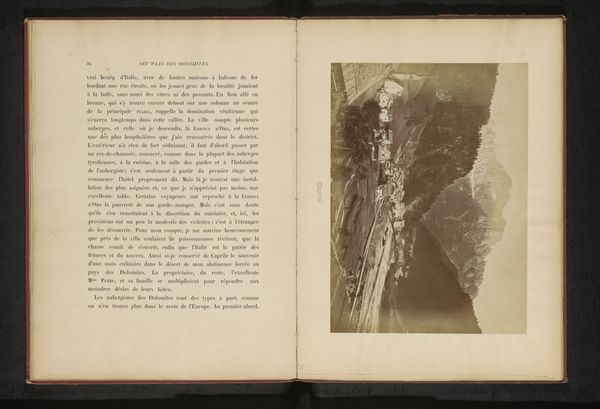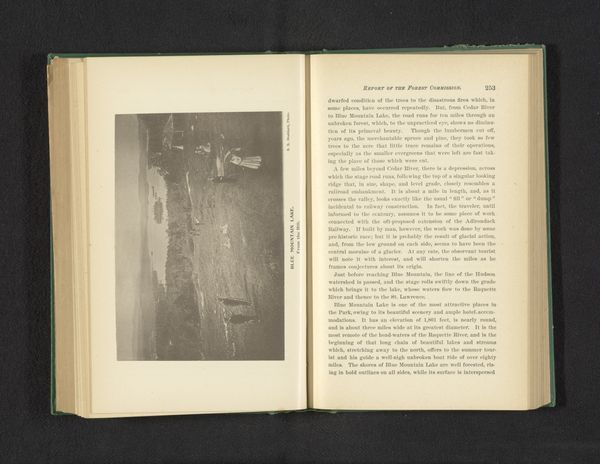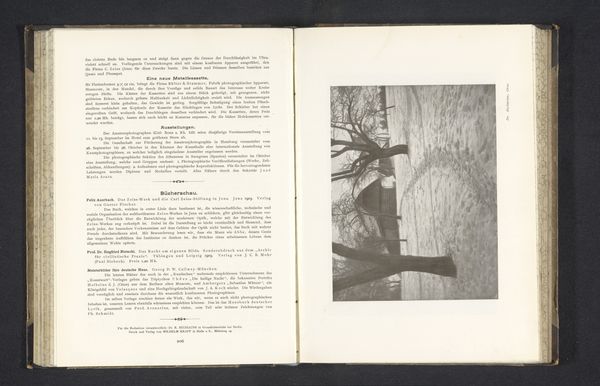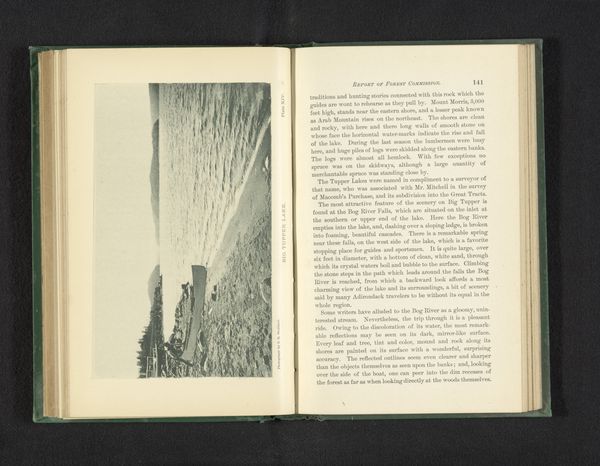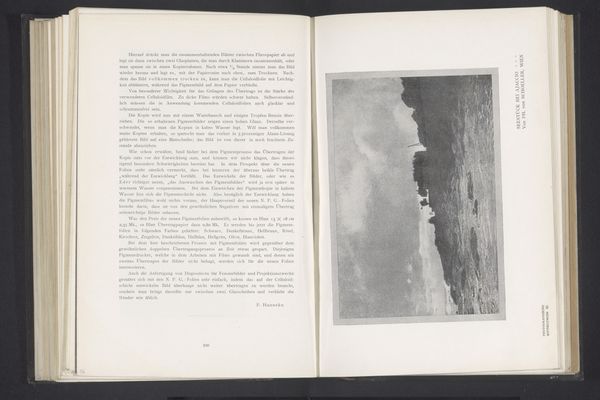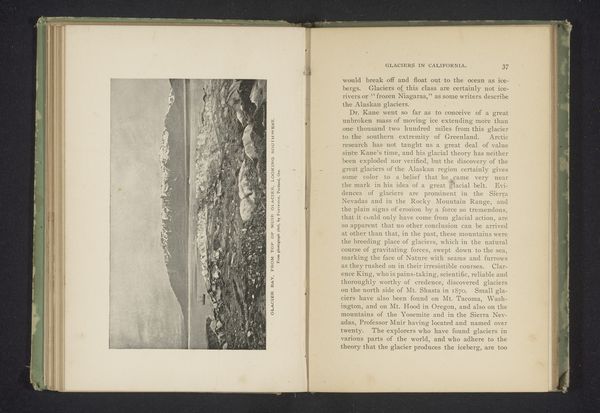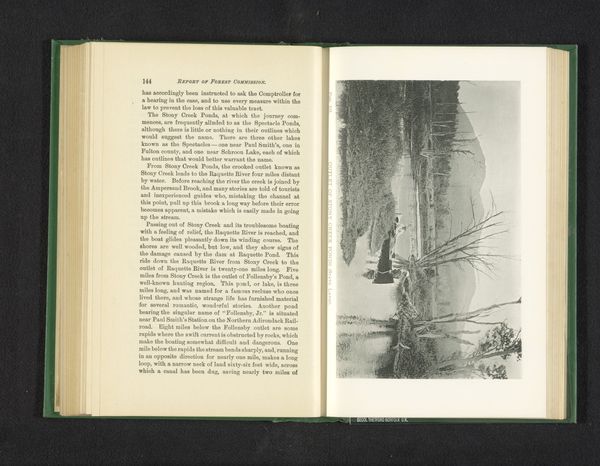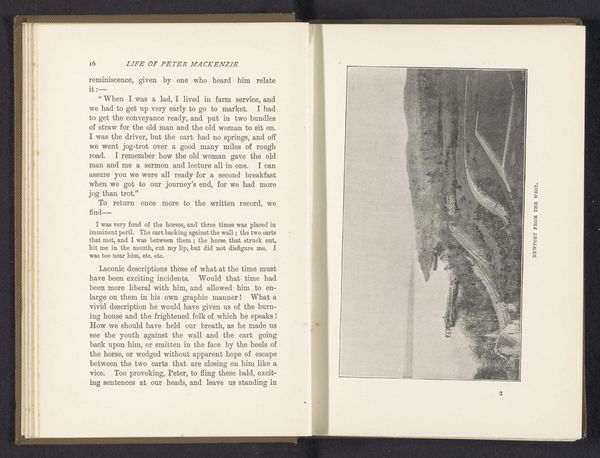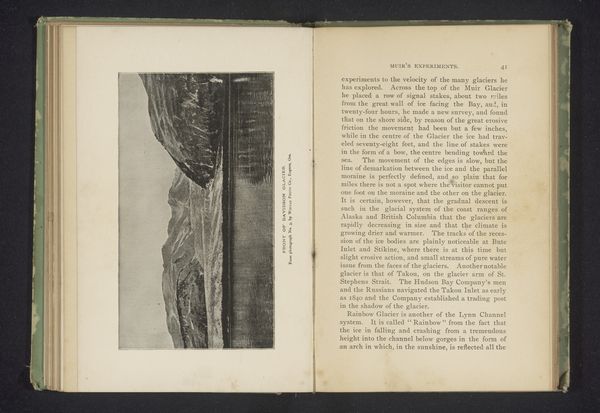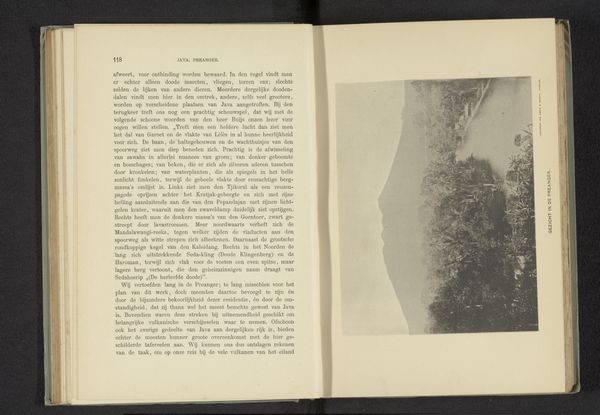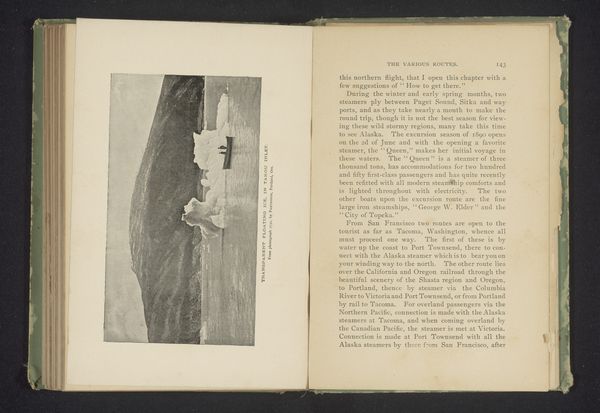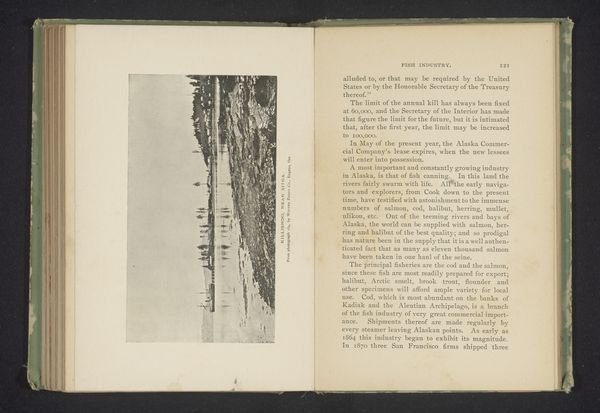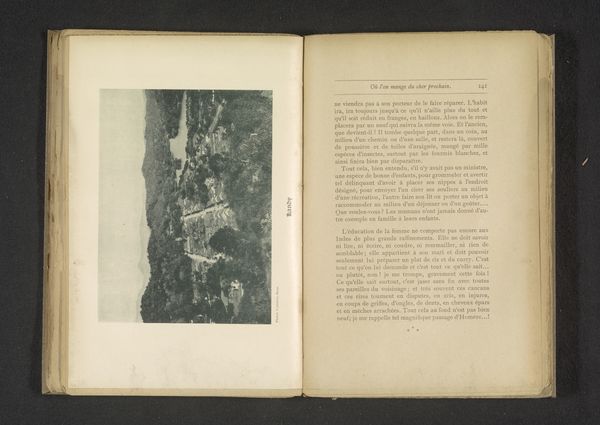
Fotoreproductie van een schets in olieverf van een landschap in Essex door Alfred Horsley Hinton before 1894
0:00
0:00
Dimensions: height 98 mm, width 153 mm
Copyright: Rijks Museum: Open Domain
Curator: Let's consider this photogravure of Alfred Horsley Hinton's "An Essex Landscape," dating from before 1894. It is printed on paper and the work appears to be an illustration in a book about art techniques. Editor: The limited tonal range and somewhat indistinct details give it a dreamlike, ethereal quality. What do you see in this piece? Curator: I see an interesting interplay of the material and the social. The photogravure process itself, a form of mechanical reproduction, democratized the image. Hinton, though a Pictorialist photographer, seems to be engaging with mass production and circulation here. Consider how this print challenges notions of the unique, handmade art object. Editor: So, it's not just about the landscape, but also about how that landscape is made accessible to a wider audience through the printing process? Curator: Precisely! Think about the labor involved. The making of the initial oil sketch, likely intended for a more exclusive audience, contrasts sharply with the subsequent mechanical reproduction for broader consumption. This makes one question: is it about landscape or is it about art's capacity to enter the public consciousness? How does labor impact the final aesthetic outcome and how the work is distributed? Editor: I hadn't considered it that way. It makes me think about the role of photography at the time and the question of whether it could even be considered “art,” with all this technology and reproduction. Curator: Absolutely. It challenges our preconceived ideas of artistic creation. Editor: That's really interesting; seeing it as not just a pretty landscape, but a commentary on art's accessibility and production changes my whole perspective. Thanks! Curator: My pleasure! Now we can start to ask who has access to art and what processes were deployed to get it there.
Comments
No comments
Be the first to comment and join the conversation on the ultimate creative platform.
